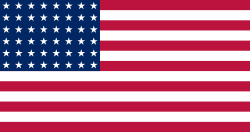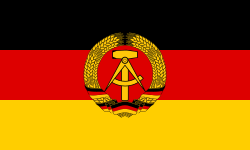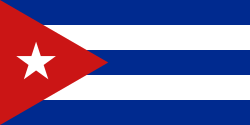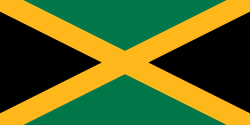Forrest Towns
Forrest Grady „Spec“ Towns (* 6. Februar 1914 in Fitzgerald, Georgia; † 9. April 1991 in Athens, Georgia) war ein US-amerikanischer Hürdenläufer, dessen Spezialstrecke die 110-Meter-Distanz war.
Sportliche Laufbahn
Forrest Towns war 1935 Elfter in der Weltjahresbestenliste, 1937 und 1938 belegte er den siebten Platz. Sein erfolgreichstes Jahr war das olympische Jahr 1936: Er blieb ungeschlagen, stellte zwei Weltrekorde auf und lief in jenem Jahr seine 20 besten Zeiten.
Seinen ersten Weltrekord stellte er mit 14,1 s im Juni in Chicago auf, allerdings mit aus heutiger Sicht unzulässigem Rückenwind. Im August stellte er diesen Weltrekord beim Zwischenlauf der Olympischen Spiele 1936 unter einwandfreien Bedingungen ein. Das Finale gewann er in 14,2 s mit 0,2 Sekunden Vorsprung auf den Briten Don Finlay.
Im selben Monat, am 27. August 1936, lief er in Oslo mit 13,7 s einen neuen Weltrekord. Mit dieser Zeit gelang ihm die größte Verbesserung eines bestehenden Weltrekords in der Geschichte des Hürdensprints. Es dauerte vierzehn Jahre, bis Richard Attlesey die Zeit von Towns unterbieten konnte. Damit ist Towns’ Weltrekord die bisher am längsten bestehende Bestzeit im Hürdensprint der Männer. Colin Jacksons Weltrekordzeit von 12,91 s aus dem Jahr 1993 hielt mit 13 Jahren (bis 2006) am zweitlängsten.
Nach seiner Karriere war Towns bis 1975 als Trainer an der Universität von Georgia tätig.
Weblinks
- Forrest Towns in der Datenbank von Olympedia.org (englisch)
| Personendaten | |
|---|---|
| NAME | Towns, Forrest |
| ALTERNATIVNAMEN | Towns, Forrest Grady (vollständiger Name); Spec (Spitzname) |
| KURZBESCHREIBUNG | US-amerikanischer Hürdenläufer |
| GEBURTSDATUM | 6. Februar 1914 |
| GEBURTSORT | Fitzgerald (Georgia) |
| STERBEDATUM | 9. April 1991 |
| STERBEORT | Athens (Georgia) |
Auf dieser Seite verwendete Medien
Olympic Rings without "rims" (gaps between the rings), As used, eg. in the logos of the 2008 and 2016 Olympics. The colour scheme applied here was specified in 2023 guidelines.
US Flag with 45 stars. In use 4 July 1896–3 July 1908. Created by jacobolus using Adobe Illustrator, and released into the public domain. This flag was used during the Spanish-American War.
US Flag with 45 stars. In use 4 July 1896–3 July 1908. Created by jacobolus using Adobe Illustrator, and released into the public domain. This flag was used during the Spanish-American War.
US Flag with 46 stars. In use 4 July 1908–3 July 1912. Created by jacobolus using Adobe Illustrator, and released into the public domain.
Other version: Image:US 46 Star Flag.svgUS Flag with 48 stars. In use for 47 years from July 4, 1912, to July 3, 1959.
The Canadian Red Ensign used between 1921 and 1957.
This image has compared for accuracy (mainly colors) using an image from World Statesmen. The only change is making the maple leaves green from red. This image has compared for accuracy (mainly colors) using an image from World Statesmen. The most recent version of this image has changed the harp into one with a female figure; see [http://flagspot.net/flags/ca-1921.html FOTW
The Canadian Red Ensign used between 1921 and 1957.
This image has compared for accuracy (mainly colors) using an image from World Statesmen. The only change is making the maple leaves green from red. This image has compared for accuracy (mainly colors) using an image from World Statesmen. The most recent version of this image has changed the harp into one with a female figure; see [http://flagspot.net/flags/ca-1921.html FOTW
Die Staatsflagge der Deutschen Demokratischen Republik, vom 1. Oktober 1959 bis 3. Oktober 1990
Flag of Canada introduced in 1965, using Pantone colours. This design replaced the Canadian Red Ensign design.
US Flag with 44 stars. In use 4 July 1891–3 July 1896. Created by jacobolus using Adobe Illustrator, and released into the public domain.
US Flag with 46 stars. In use 4 July 1908–3 July 1912. Created by jacobolus using Adobe Illustrator, and released into the public domain.
Other version: Image:US 46 Star Flag.svg












